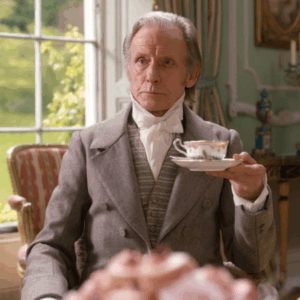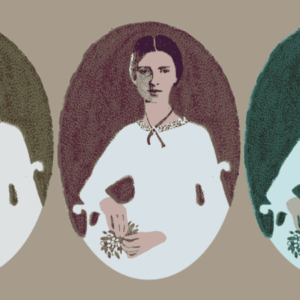
10 Literary Diss Tracks
Or 10 (More) Reasons to Be Nice to Writers
Everyone knows that writers mine characters, details, and events from their own lives. After all, how could anyone avoid it? (See also the fact that every AWP, you are sure to spot at least one person wearing some version of this shockingly clever t-shirt.) But sometimes those borrowed details turn out to be rather, shall we say, pointed. Even barbed. (Or just Hemingway swinging a drunken club at whomever was nearby.) Below, a few cases of authors who have drawn very unflattering fictional portraits of real people, including other writers, famous people, and their nearest and dearest (unsurprisingly, these categories often overlap). Maybe we all really should be paying attention to those t-shirts.
 Ernest Hemingway’s portrayal of F. Scott Fitzgerald in “The Snows of Kilimanjaro”
Ernest Hemingway’s portrayal of F. Scott Fitzgerald in “The Snows of Kilimanjaro”
First things first. In his memoir A Moveable Feast, Hemingway famously lays his friend and rival F. Scott Fitzgerald’s insecurities bare. And I mean very bare indeed: in the book, Hemingway recounts a moment at Michaud’s, in which Fitzgerald comes to him for advice. “Zelda said that the way I was built I could never make any woman happy,” Fitzgerald reportedly began. “She said it was a matter of measurements. I have never felt the same since she said that and I have to know truly.” As any good friend would, Hemingway takes Fitzgerald into the bathroom and has a look. “You’re perfectly fine,” Hemingway assures him when they return. “You are O.K. There’s nothing wrong with you. You look at yourself from above and you look foreshortened. Go over to the Louvre and look at the people in the statues and then go home and look at yourself in the mirror in profile.” Officially, Hemingway is claiming that his friend’s penis is not too small after all—but still, I can’t imagine Fitzgerald would have appreciated this making it into print. Particularly if it didn’t happen, which many have speculated.
Even in fiction, Hemingway didn’t mind mocking his friend by name. In 1936, Esquire published Ernest Hemingway’s short story “The Snows of Kilimanjaro,” which includes this passage:
The rich were dull and they drank too much or they played too much backgammon. They were dull and they were repetitious. He remembered poor Scott Fitzgerald and his romantic awe of them and how he had started a story once that began, “The rich are different from you and me.” [This would be Fitzgerald’s 1926 story “The Rich Boy,” though the quote is inexact.] And how someone had said to Scott, Yes, they have more money. But that was not humorous to Scott. He thought they were a special glamorous race and when he found they weren’t it wrecked him just as much as any other thing that wrecked him.
After reading the story, Fitzgerald wrote to Hemingway—very graciously, considering the circumstances:
Dear Ernest:
Please lay off me in print. If I choose to write de profundis sometimes it doesn’t mean I want friends praying aloud over my corpse. No doubt you meant it kindly but it cost me a night’s sleep. And when you incorporate it (the story) in a book would you mind cutting my name?
It’s a fine story—one of your best—even though the “Poor Scott Fitzgerald ect” rather spoiled it for me.
Ever Your Friend
Scott
Riches have never fascinated me, unless combined with the greatest charm or distinction.
Apparently, when the story was to be collected in The Fifth Column and the First Forty-Nine Stories, Hemingway wanted to simply drop the “Fitzgerald” and leave the “Scott.” Max Perkins insisted that the name be changed, so it was published as “Julian”—but the reference to Fitzgerald’s story remains, so the trail is not much harder to follow.
*
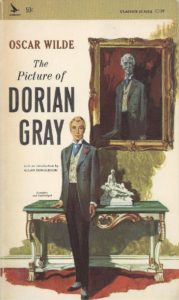 Oscar Wilde’s portrayal of John Gray in The Picture of Dorian Gray
Oscar Wilde’s portrayal of John Gray in The Picture of Dorian Gray
John Gray was a poet in Oscar Wilde’s circle in the late 1800s, when The Picture of Dorian Gray was first published. He was by all accounts very handsome. So Wilde wrote him into this story—probably as a compliment, but Dorian Gray, after all, does not have a happy end, so it’s a compliment that history has somewhat reversed. And of course, trust Wilde not even to change your surname in his fictionalized account of your supernatural vanity—only give you a rather fancier first name. Then again, according to The Guardian, it was likely deliberate. Fiona MacCarthy writes:
Wilde’s biographer Richard Ellmann sees the naming of his story The Picture of Dorian Gray as “a form of courtship.” The Christian name, as would have been obvious in sophisticated circles, refers to the ancient Greek tribe, the Dorians, proselytes for the culture of paiderastia, sexual love between men. Gray was blatantly the surname of Wilde’s own latest passion, like Dorian a “veritable Narcissus”—a boy so striking that strangers would lean out of their boxes at Covent Garden to fix him in their opera glasses.
At first, MacCarthy writes, Gray was pleased by the portrayal, even signing some letters “Dorian,” but after seeing the reception of the book by the public at large as “a gloating study of the mental and physical corruption of a fresh, fair and golden youth.” Then, of course, came the whole obscenity trial. Wilde ended up in jail. Gray ended up in the priesthood.
*
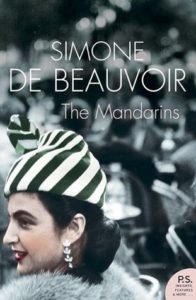 Simone de Beauvoir’s portrayal of Nelson Algren in The Mandarins
Simone de Beauvoir’s portrayal of Nelson Algren in The Mandarins
Simone de Beauvoir may, at one time, have been in love with Nelson Algren, but that didn’t keep her from raking him across the coals in her roman à clef. Though again, it’s not clear that’s what she thought she was doing—the book, which won the Prix Goncourt after its publication in 1954, is dedicated to him, after all. It tells the story of their love affair (well, the love affair of Anne Dubreuilh and Lewis Brogan) and also features, among others, Anne’s wife Robert (a fictionalized Sartre) and Henri Perron (a fictionalized Camus). However, according to Clancy Sigal in the Los Angeles Times, in the novel, de Beauvoir portrays Algren’s character “as sulky and withdrawn—a boor. It was a violent blow to his heart and to his private code. He almost never wrote about his personal friends or the literati; she hardly ever wrote about anything but. He should have seen it coming. But what lover does?”
*
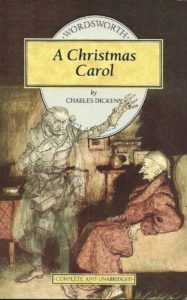 Charles Dickens’ portrayal of John Elwes in A Christmas Carol
Charles Dickens’ portrayal of John Elwes in A Christmas Carol
Remember Ebenezer Scrooge, the character who was so notoriously miserly that his surname has become a noun? It is likely that he was inspired by politician John Elwes, who, according to the Telegraph, lived a…
…breathtakingly skinflint lifestyle. Elwes would go to bed in darkness to save using a candle, and sit with his servants in the kitchen to save lighting a fire in another room. Apart from the chill, the other rooms in his various houses would not have been particularly nice places to sit, since Elwes refused to pay for any maintenance. In his final years, his many homes had all become virtually uninhabitable, though he seemed not to care, becoming of ‘no fixed abode’ as he moved from one to another.
Elwes usually wore ragged clothes, going for months at a time in a single suit of clothing that he wore in bed as well as during the day. He once spent weeks wearing a tatty wig he found discarded in a hedge. To avoid paying for a coach Elwes would walk in the rain, and then sit in wet clothes to save the cost of a fire to dry them. He regularly ate mouldy or putrefying food. One rumour was that he even ate a rotten moorhen he took from a rat.
Which more or less tracks, considering Dickens’ description:
Oh! But he was a tight-fisted hand at the grindstone, Scrooge! a squeezing, wrenching, grasping, scraping, clutching, covetous old sinner! Hard and sharp as flint, from which no steel had ever struck out generous fire; secret, and self-contained, and solitary as an oyster. The cold within him froze his old features, nipped his pointed nose, shrivelled his cheek, stiffened his gait; made his eyes red, his thin lips blue; and spoke out shrewdly in his grating voice. A frosty rime was on his head, and on his eyebrows, and his wiry chin. He carried his own low temperature always about with him; he iced his office in the dog-days; and didn’t thaw it one degree at Christmas.
Bah! Humbug!
*
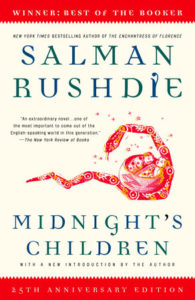 Salman Rushdie’s portrayal of his own father and also Indira Gandhi in Midnight’s Children
Salman Rushdie’s portrayal of his own father and also Indira Gandhi in Midnight’s Children
I think it’s fair to say that one ought to be extra careful while fictionalizing people from two groups: the very closely related, and the very famous and powerful. In Midnight’s Children, Rushdie managed to fictionalize—and offend—both. According to Richard Cohen in How to Write Like Tolstoy,
When [Rushdie’s] father first read the book, in 1980, he was convinced that Ahmed Sinai, the novel’s drunken patriarch, was a satirical portrait based on him. He was furious. Salman Rushdie did not deny that the character was a fictionalized version of his parent—“In my young, pissed-off way,” he later explained, “I responded that I’d left all the nasty stuff out”—but he objected to his father’s wounded reaction, which he thought betrayed a crude understanding of how novels worked. “My father had studied literature at Cambridge so I expected him to have a sophisticated response to the book.” But in Rushdie’s case he never rescinded his “kidnapping.”
But Rushdie’s father wasn’t the only person to be upset by their portrayal in this work of magical realism. Indira Gandhi herself sued Rushdie over a single sentence in the book: “It has often been said that Mrs. Gandhi’s younger son Sanjay accused his mother of being responsible, through her neglect, for his father’s death; and that this gave him an unbreakable hold over her, so that she became incapable of denying him anything.” Gandhi won, and the sentence was removed from all future editions.
*
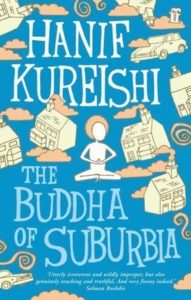 Hanif Kureishi’s portrayal of his family in The Buddha of Suburbia
Hanif Kureishi’s portrayal of his family in The Buddha of Suburbia
It isn’t only Rushdie who has had family members publicly decry their apparent portrayal in a work of fiction. (In fact this is the most common kind of dissing authors seem to do.) Kureishi has had repeated trouble with his loved ones and their interpretations of the truth and his presentation of it—though of course as an outsider it is nearly impossible to know the truth. In The Observer, Robert McCrumb writes:
After the publication of The Buddha of Suburbia, his sister, Yasmin, had accused him, in the Guardian, of selling the family “down the line” with his portrait of their parents and grandparents. “My father,” she says, “felt that Hanif robbed him of his dignity.” Father and son did not speak for many months. Today, in Shepherd’s Bush, he makes a point of telling me that he “spoke to my mum this morning”.
That was as nothing compared with the furore about Intimacy, a novella about a man leaving his wife and two sons, a self-lacerating fiction that some felt to be too shockingly close to home (Kureishi had just left his partner, Tracey Scoffield, and their twin sons). He won’t talk about this damaging episode now beyond wryly acknowledging that it “put me in trouble with the chicks.”
Yikes.
*
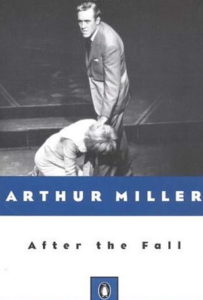 Arthur Miller’s portrayal of Marilyn Monroe in After the Fall
Arthur Miller’s portrayal of Marilyn Monroe in After the Fall
Arthur Miller’s 1964 play centers on Quentin (a New York intellectual) and Maggie (an internationally beloved pop singer who ultimately commits suicide), who are, of course, very thinly veiled versions of Miller and Monroe themselves. The production was directed by Elia Kazan, who had introduced Miller and Monroe—in The Many Lives of Marilyn Monroe, Sarah Churchwell writes: “That their reconciliation took place over Marilyn’s dead body is more than a little ironic, an irony that did not escape the notice of critics, who were fairly unanimous in their recoil from what they saw as Miller’s exercise in self-justification.” Indeed, according to the New York Times, when the play opened, “it was greeted by a torrent of disapproval. Some critics viewed it as a ruthless, self-indulgent portrait of Mr. Miller’s marriage to Monroe so soon after her death in 1962.” Churchwell quotes The New Republic‘s review of the play, which called it “a shameless piece of tabloid gossip” and found it “astonishing that a playwright, whose major business is perception, could live with this unfortunate woman for over four years, and yet be capable of no greater insight than those of . . . a professional theater columnist.” In fact, according to biographer Sarah Bradford, Jackie Kennedy was so irritated by Miller’s treatment of Monroe that she refused to have anything to do with the theater that put on the play.
*
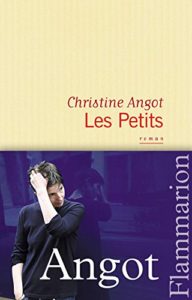 Christine Angot’s portrayal of Elise Bidoit in Les Petits (The Little Ones)
Christine Angot’s portrayal of Elise Bidoit in Les Petits (The Little Ones)
Ah, the trials of autofiction. In this case, there was literally a trial—a literal literary trial! (Sorry. I get tired.) In 2003, Elise Bidoit sued author Christine Angot for “invasion of the intimacy of private life.” According to Bidoit, Angot—who was, at the time, dating Bidoit’s ex-partner—had based the book’s main character on her, and that “the deeply unflattering portrayal, which included long extracts of the family magistrate’s social report on Miss Bidiot’s children, led her to try to commit suicide.” The judges ruled in Bidoit’s favor, ordering Angot and her publisher to pay 40,000 euros in damages.
The Telegraph quoted the judges as declaring that in the novel, “a whole chunk of (Miss Bidoit’s life) is evoked down to the slightest detail, from the most commonplace to the most intimate,” and that Angot had painted a “Manichean picture of a manipulative character representing only the dark side of female power,” they went on. They decided that Angot “cannot seriously claim to have transformed this real character into a (fictional) character expressing ‘a truth’ that belongs solely to her and is the fruit of her writing.”
*
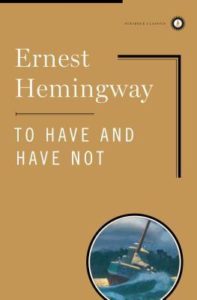 Ernest Hemingway’s portrayal of John Dos Passos in To Have and Have Not
Ernest Hemingway’s portrayal of John Dos Passos in To Have and Have Not
In Turning Life into Fiction, Robin Hemley points out the coy disclaimer Hemingway included in his novel To Have and Have Not: “In view of a recent tendency to identify characters in fiction with real people, it seems proper to state that there are no real people in this volume: both the characters and their names are fictitious.” Well—maybe by the time of publication there were no real people in the novel (though I doubt it), but originally, the book contained characterizations of Hemingway’s onetime-friends John Dos Passos and his wife Katy Smith Dos Passos that were so obvious and so cruel that Esquire publisher Arnold Gingrich told him he’d better take them out or risk a lawsuit. Hemingway did take them out, but since manuscripts never burn, especially on the Internet, we know exactly what he wanted to say:
Because his is incorruptible his rich friends all loan him money. They’re proud to back him. It gives them a sort of incorruptable [sic] feeling too. He’s a sort of modern Galahad you know. Wouldnt [sic] change a comma if you put him on the rack. You could break him on the wheel but the word merde stays in you know. Always tells the truth about the interests too. Attack Hearst, Morgan, anyone. Fearless you know. In a year he’ll borrow about what the average writer makes. When he started he always paid every one back and he was really incorruptable. [sic] Then he began to work at it. Of course every once in a while he has a book out but he never pays anyone any more. He doesnt [sic] have to. He has such a reputation for incorruptability [sic] that its [sic] like a trust fund.
And as for Katy Smith Dos Passos:
She’s very odd. You know I really think he was honest until he married her. She’s handsome and she’s charming and she’s very good to him but she has just one little defect. She likes to steal as much as a monkey does. More I guess . . . Of course she’s a marvellous [sic] girl without that little habit. Marvellous [sic] with it too. But she’s raised incorruptability [sic] in him from a characteristic into a way of making a living.
As Robert E. Fleming writes in the Journal of Modern Literature, “Hemingway was hitting his old friend where he must have supposed it would hurt most”—his integrity. But apparently, Hemingway also wanted to remind Dos Passos of the time Hemingway had loaned him a thousand dollars. Moral: never owe a writer anything.
*
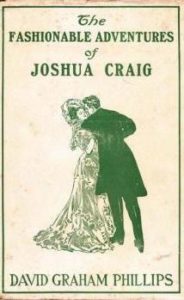 David Graham Phillips’s supposed portrayal of Fitzhugh Coyle Goldsborough in The Fashionable Adventures of Joshua Craig
David Graham Phillips’s supposed portrayal of Fitzhugh Coyle Goldsborough in The Fashionable Adventures of Joshua Craig
One of the most notorious literary crimes in history is over a supposed case of libel: in 1909, David Graham Phillips, then a leading light of the literary world, published a deliciously-titled satire skewering the upper classes—that is, the likes of Fitzhugh Coyle Goldsborough, who thought the novel was about his own family. Peter Duffy writes in The New York Times:
Not only did Goldsborough believe that Margaret Severance (described as one of the “fashionable noddle-heads”) was based on his beloved sister. He also came to believe that Phillips had the power to read his mind, what he called in his diary a “lucrative method of literary vampirism.” Increasingly unstable, Goldsborough abruptly quit his position as a violinist in the Pittsburgh Symphony Orchestra and moved to New York, renting a room on East 19th Street with a view of Phillips’s south-facing apartment in the National Arts Club on Gramercy Park. “He is an enemy to society,” Goldsborough reportedly said. “He is my enemy.”
In 1911, Goldsborough confronted Phillips on the street, shouting “Here you go!” before shooting him six times. Then he shouted, “Here I go!” and shot himself. “But what of Goldsborough’s charges?” Duffy asks.
Had a distinguished Washington family really been libeled? Phillips’s friends and family insisted he had never heard of the Goldsboroughs. The newspapers all spoke of the “fancied grievance” of a “crazed violinist.” And Phillips, in the minutes after he was shot, offered his own response to the question of whether he was acquainted with the assassin.
“No,” he responded, as if speaking for every novelist who has ever been accused of callous indifference to the reputations of real people. “I don’t know the man.”
Emily Temple
Emily Temple is the managing editor at Lit Hub. Her first novel, The Lightness, was published by William Morrow/HarperCollins in June 2020. You can buy it here.

















